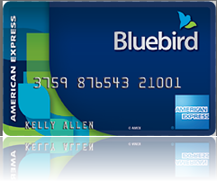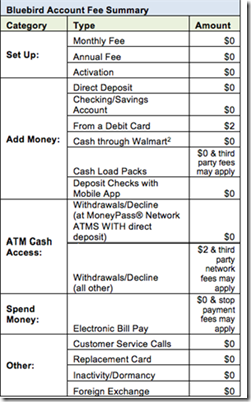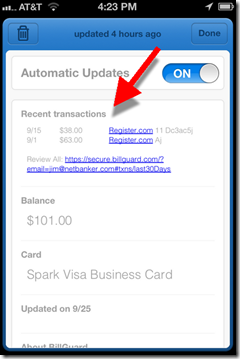 My favorite session at Money2020 Expo, the massive new trade show organized by Google Payments execs(see note 1), was about as far away from the buzzy mobile wallet and payment schemes as one could get.
My favorite session at Money2020 Expo, the massive new trade show organized by Google Payments execs(see note 1), was about as far away from the buzzy mobile wallet and payment schemes as one could get.
I was struck by the potential of alt-business lending. The technology could have a more lasting economic benefit, at least in developed countries, than the transition from plastic to mobile payments (note 2).
The session included the three key alt-biz lenders who are leading the way in disrupting the massive global market in commercial credit (note 3):
Glen Goldman, CEO, Capital Access Network (FinovateFall 2010 demo)
Kathryn Petralia, Co-founder & COO, Kabbage (FinovateSpring 2012 demo)
Noah Breslow, CEO, On Deck Capital (FinovateSpring 2012 demo)



Like most disrupters, the three are gaining traction in a narrow niche largely avoided by legacy players: sub-$250k non-asset-backed commercial lending. In total, the three are on track to do roughly $2 billion in total lending next year. While impressive, that’s not the big story. The disruptive piece is the technology the three use to underwrite the loans.
They are redefining the borrower-lender relationship with real-time, ongoing electronic monitoring. Instead of borrowers providing static financials after the fact, these lenders have been granted access to the daily receipts of the business (via online banking), so the lenders know every day whether they should expand or contract the loan amount authorized. The lenders also get repayments frequently, sometimes daily, which helps reduce risk.
The result is that these companies are able to provide credit to businesses that are unable to get a loan elsewhere because they are just too small and/or the entrepreneurs don’t have the necessary personal FICO scores (note 4).
Capital Access shared an interesting story on stage. Apparently, they were pitching their service to a very large U.S. bank. Capital Access had extended $245 million in loans to the bank’s customers which came as quite a surprise to the bank. However, when they found out the FICO scores of the biz owners were terrible (in the 500s), the bank said those could not be good loans. But it turns out the Capital Access loans had a 2.2% charge-off rate, bettering the bank’s rate on its “lower-risk” borrowers.
Given that the short-term loans were made at rates of 15% and up, that is one massive chunk of lost revenue.
I talked to Noah Breslow, CEO of On Deck Capital, later that night, and he said they are seeing huge upticks in demand, which they are now able to meet with much cheaper capital recently acquired from Goldman and others. He said their 10-month-old program looking at US Bank business-card declines was showing great dividends for all parties. And they continue to actively seek more bank partners which can participate in a variety of ways.
Bottom line: I believe that eventually most business credit (from banks and others) will be managed with this real-time transparency into the borrower’s finances. It allows the lender to better price the risk, which assuming sufficient competition, allows more credit to be granted, at better overall prices. Banks, you don’t have to do this all at once. But at least start working with one or more of these companies to give your loan declines a second look (note 5).
———
Notes:
1. Money2020 organizers, Anil Aggarwal and Jonathan Weiner, are serial entrepreneurs behind payments startup TxVia which Google acquired this spring. Money2020 (v1) attracted more than 2,000 attendees to its inaugural 3-day event held in Las Vegas. It was an amazing turnout, which speaks to the interest in Google Wallet, mobile payments, and Finance 2.0 in general. Kudos to the team that pulled together a mind-boggling 300+ speakers across 5 tracks over 2 and a half days.
2. And I’m not downplaying the impact of the mobile-payments revolution, which has the potential to save billions in fraud and waste while creating enormous opportunities with card issuers large and small in advertising, loyalty, and so on.
3. I should also commend moderator Nick Holland (Yankee Group) who fed the participants great questions.
4. The lenders all addressed the small-business owner “credit catch 22.” Certain things that can lead to business growth, such as quitting your day job and maxing out your credit cards, kill personal FICO scores, even though they are exactly what the entrepreneur should do to maximize business results.
5. According to CEO Glen Goldman, Wells Fargo is currently referring customers it can’t help to Capital Access Network.
6. For more info on small biz online/mobile banking and lending, see our Online Banking Report on micro and small businesses (subscription, published Oct 2009).

 Finantix launched Sharp digital banking platform to improve sales and service interaction
Finantix launched Sharp digital banking platform to improve sales and service interaction SocietyOne debuted its ClearMatch technology used to streamline the loan application process
SocietyOne debuted its ClearMatch technology used to streamline the loan application process  its peer-spending comparison tool, People like U
its peer-spending comparison tool, People like U


![clip_image002[8] clip_image002[8]](http://s3.amazonaws.com/finovate-archive/old/WindowsLiveWriter/cb0035956ea7_B397/clip_image002%5B8%5D_thumb.jpg)















 Pricing
Pricing 



















